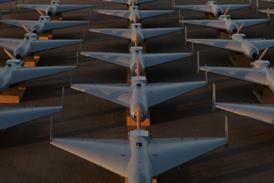Actuator problem ruled out as cause of Air Transat A310 incident, and operators advised to make precautionary checks
Tests on the actuators of the Air Transat Airbus A310-300 rudder that separated over the Caribbean Sea show that there was no counter-action between them, eliminating one possible cause of an incident perplexing the manufacturer and accident investigators. Airbus has advised the operators of about 400 A310s and A300s with similar composite rudders to carry out precautionary visual and tap checks of the control surfaces.
Airbus chief product safety officer John Lauber says when the rudder detached in the cruise at 35,000ft (10,700m) the only symptoms the pilots could detect were that the aircraft began "a gentle Dutch roll" and the autopilot tripped out.
He adds that rudder actuator tests have shown their action was synchronised, and they were undamaged and still in place in the aircraft. The hinges were also still attached to the aircraft. Accident investigator the Transportation Safety Board of Canada says there is no indication that the crew provided any rudder input before the separation.
Late last week the rudder had still not been found. Lauber says it is unclear whether the control surface detached as a single piece or broke up. He says the carbonfibre-reinforced material is denser than water so only sections with a honeycomb-structure core would float.
Airbus says of its advice to operators to carry out rudder checks that it "does not know" how the separation took place, so it was being "abundantly" cautious in advising the inspection.
DAVID LEARMOUNT/LONDON
Source: Flight International























